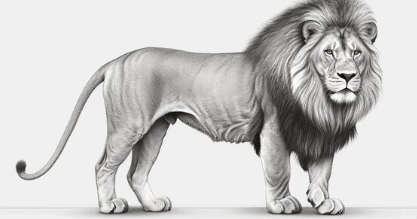Not just a depiction, Drawing:Tqg7rsmzrv8= Lion reveals the profound connection between its majestic form

The process of Drawing:Tqg7rsmzrv8= Lion extends beyond mere representation; it invites an exploration of anatomical precision and artistic technique. Understanding the lion’s physical structure, coupled with effective shading methods, allows artists to convey not just its formidable presence but also the intricate textures of its mane and fur. This endeavor challenges creators to harmonize form and environment, prompting questions about the symbolism of the lion in art and culture. What deeper meanings can emerge when we juxtapose the lion’s fierce elegance against the backdrop of its natural habitat?
Understanding Lion Anatomy
To truly appreciate the majestic presence of a lion, one must delve into the intricate anatomy that not only supports its formidable stature but also enhances its role as a top predator in the wild.
Its powerful muscle structure enables swift, agile movements, while the striking facial proportions lend an air of authority and grace, embodying the essence of freedom that defines the king of the jungle.
Essential Drawing Techniques
Capturing the essence of a lion on paper requires a mastery of essential drawing techniques that emphasize both its powerful form and the intricate details that convey its majestic spirit.
Employing shading techniques enhances depth, while texture creation brings the lion’s mane and fur to life.
These artistic methods allow for a dynamic representation, inviting viewers to experience the raw beauty and strength of this magnificent creature.
Inspiration and Creative Ideas
An artist can find inspiration for drawing a lion in the untamed beauty of the African savanna, where the golden hues of the grasslands contrast with the regal presence of this apex predator, evoking a sense of power and grace.
The lion symbolizes courage and strength, embodying the essence of majestic wildlife, inviting artists to capture its fierce elegance on canvas.
Conclusion
In the twilight of the savanna, where the golden grasses sway gently, the lion stands as a silhouette of power and grace.
Each stroke of the pencil captures the sinewy form, while delicate shading breathes life into the flowing mane.
The interplay of light and shadow reflects the fierce spirit that roams the wild, evoking a sense of awe.
Through art, the essence of the lion transcends the canvas, inviting one to witness the raw beauty of nature’s king.




